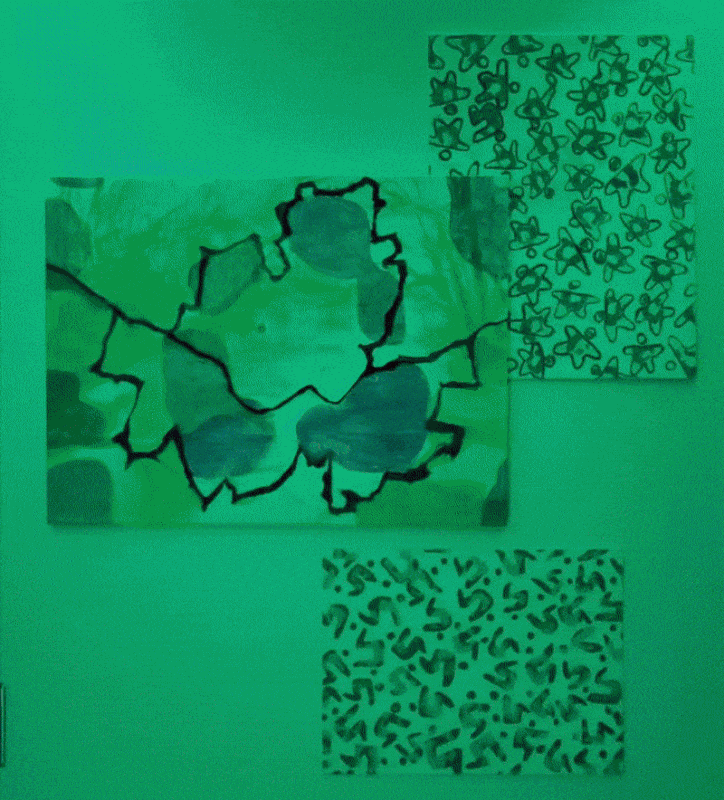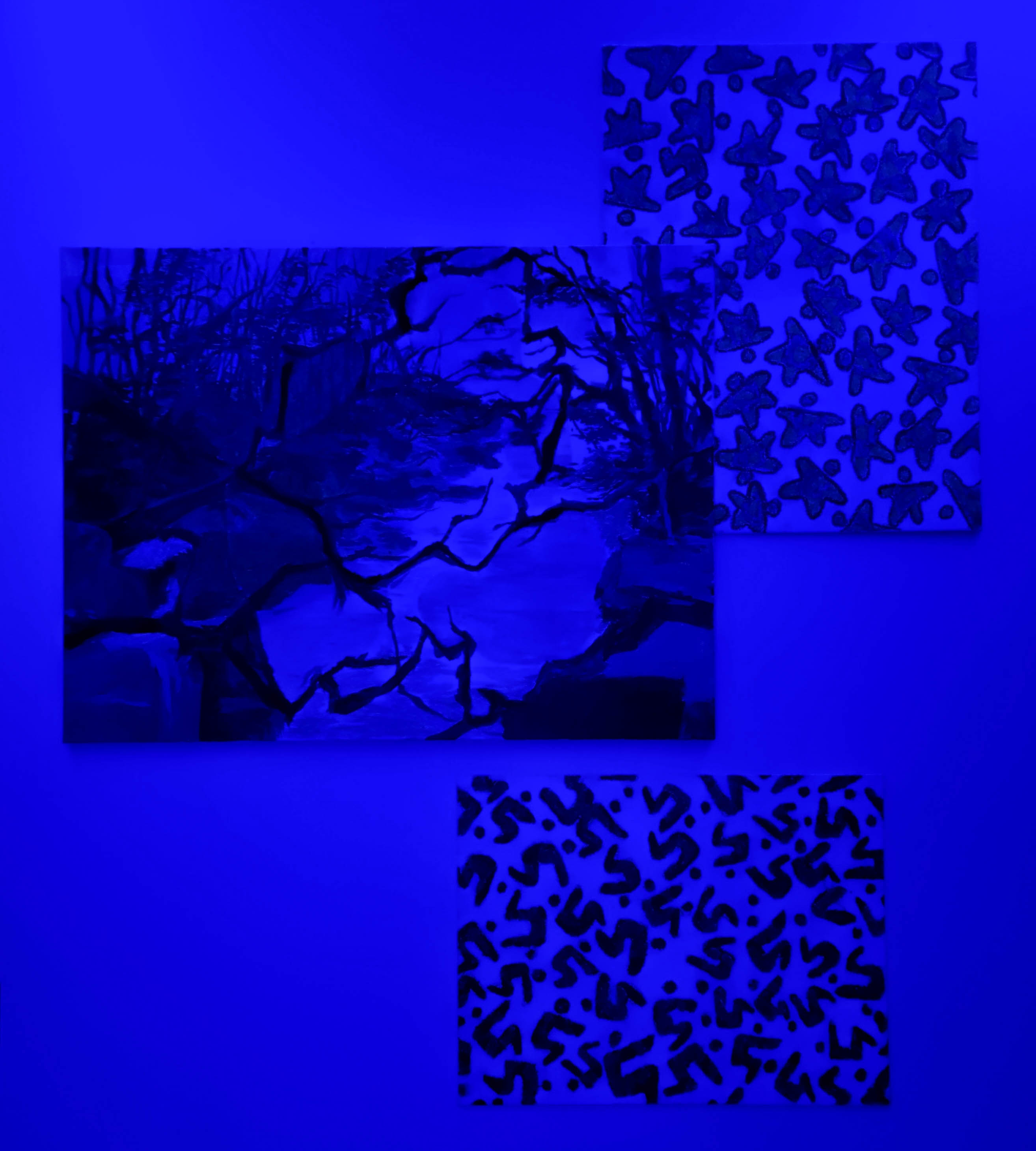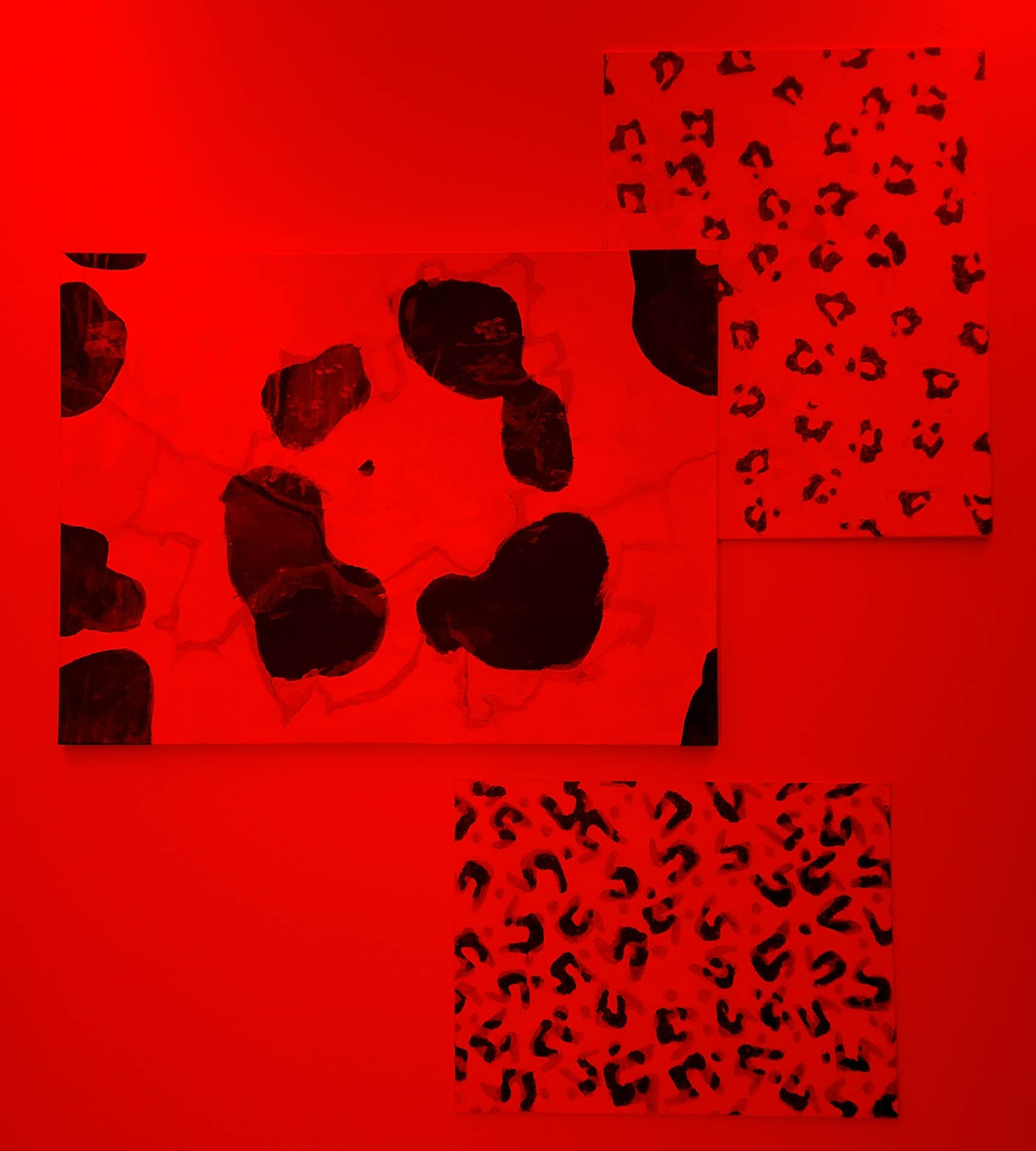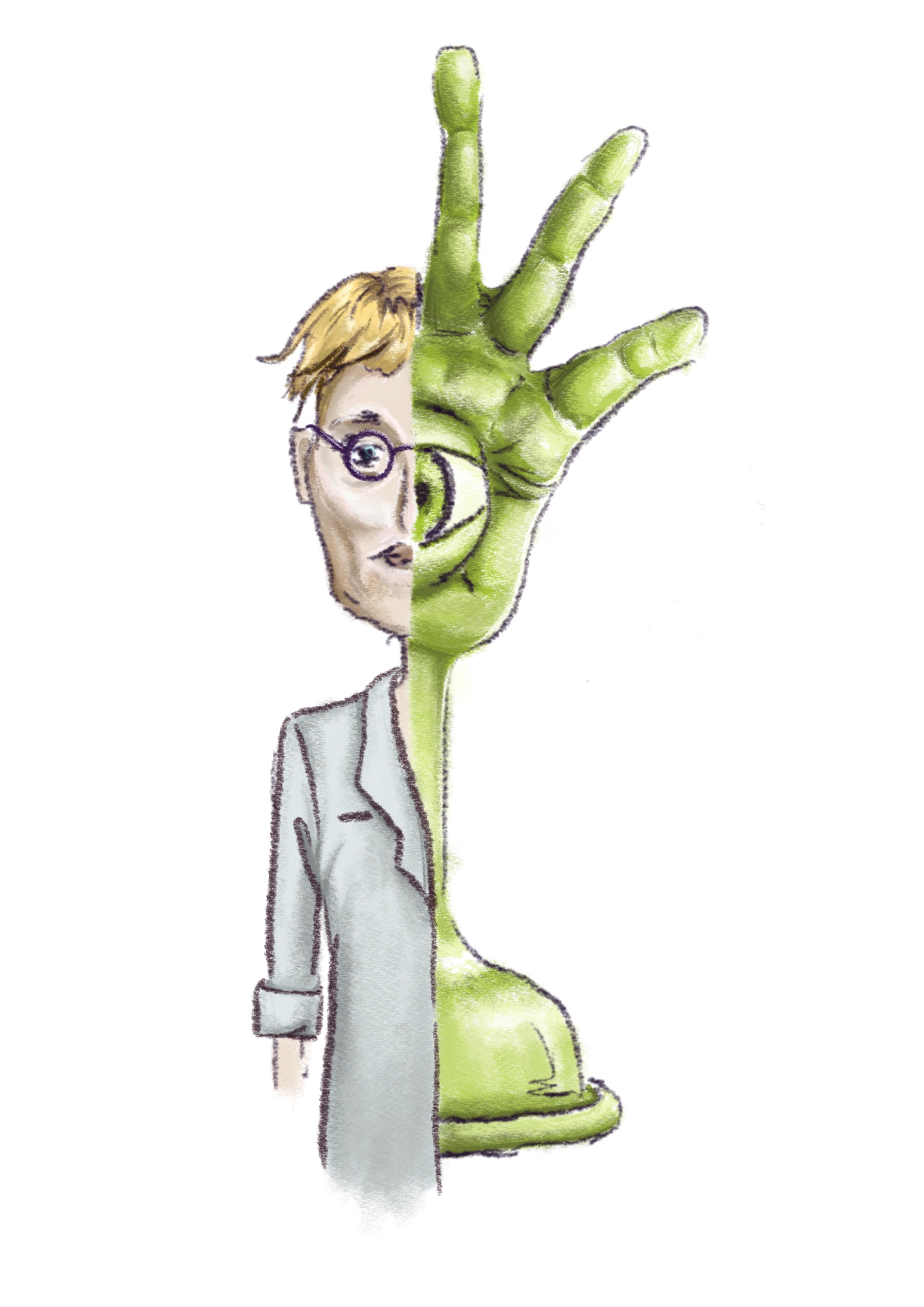ARTWORKS
SELF PORTRAIT
SPECIFICATIONS
24x18, 14x18, 16x12 in
Acrylic and oil pastel on canvas
Within my self-portrait, I approached it more symbol-oriented, rather than trying to represent my physical self. I represented what I believe to be the biggest aspects of my life today by representing myself through three different perspectives: the “objective” world, my family, and my perspective. By utilizing light as an interactive medium, my final piece is an artwork in motion, where the change of my painting represents my developing and ever-changing identity, and the current form I believe it to be in right now.
Each light represented a different perspective or aspect of my life, and all of these colors combined symbolized the “entirety” of my identity. Starting with the green light, it represented me from the perspective of the world. You will see an outline of a map, specifically Seoul, my hometown. My ethnic identity being a Korean, and my cultural identity as a resident of Seoul was an objective piece of my identity that I truly believed was a huge aspect that shaped me. Second, the blue light was a visual representation of my parents’ philosophy that had stuck with me: life is like rowing backwards down a river in a forest—you can only see where and how much you’ve come, and you will never know what’s behind you. Recognizing my identity with my past experiences was what I intended to symbolize by the scene of the woods. The final color, red, was my perception of my identity. Recently I had gotten out of the phase to realize that my unimportance in the world was not something necessarily “bad”. I represented this with a leopard spot, where if the world/society were to be the leopard, I would be just one spot. I was different from everyone else, and so was everyone to each other, but we were all as insignificant as one leopard spot yet as significant as one. I was adding up to the identity of the leopard, yet my absence would not be monumental. I had thought this to be a disappointing part about me, but had come to realize that my insignificance was what made up my identity, and was a part of me that did not need to be perceived as a degrading quality. All three of these identities or perspectives of me was put onto one piece, as I believed the mashup of all of them was what portrayed me the most relevantly, which was depicted under white light.
The two supplementary canvases depict my idea on finding a community. I always believed the community I was in would shape my identity, and wanted to show how we simply may be “out of place”, in a different community sometimes. The shapes represent humans, where there is one human in both drawings that do not “belong”. In the top piece, one of the humans are in the shape that all the humans in the bottom piece is in, implying how being considered “wrong” in a community may simply be that we haven’t found those like us yet, and showed how different everyone could be. The one different human in the bottom piece was made different from either of these pieces to show these possibilities and communities were endless, and not just two depicted in the piece. I also depicted each of them as leopard spots when seen under the red light to accentuate my outlook and perspective on everyone else as well. I made an outline appear for the top piece under the green light to unify the essence of the main painting with the two, while making them becoming completely dark to match the value scheme of the scene under the blue light.
SPECIFICATIONS
24x18, 14x18, 16x12 in
Acrylic and oil pastel on canvas
Within my self-portrait, I approached it more symbol-oriented, rather than trying to represent my physical self. I represented what I believe to be the biggest aspects of my life today by representing myself through three different perspectives: the “objective” world, my family, and my perspective. By utilizing light as an interactive medium, my final piece is an artwork in motion, where the change of my painting represents my developing and ever-changing identity, and the current form I believe it to be in right now.
Each light represented a different perspective or aspect of my life, and all of these colors combined symbolized the “entirety” of my identity. Starting with the green light, it represented me from the perspective of the world. You will see an outline of a map, specifically Seoul, my hometown. My ethnic identity being a Korean, and my cultural identity as a resident of Seoul was an objective piece of my identity that I truly believed was a huge aspect that shaped me. Second, the blue light was a visual representation of my parents’ philosophy that had stuck with me: life is like rowing backwards down a river in a forest—you can only see where and how much you’ve come, and you will never know what’s behind you. Recognizing my identity with my past experiences was what I intended to symbolize by the scene of the woods. The final color, red, was my perception of my identity. Recently I had gotten out of the phase to realize that my unimportance in the world was not something necessarily “bad”. I represented this with a leopard spot, where if the world/society were to be the leopard, I would be just one spot. I was different from everyone else, and so was everyone to each other, but we were all as insignificant as one leopard spot yet as significant as one. I was adding up to the identity of the leopard, yet my absence would not be monumental. I had thought this to be a disappointing part about me, but had come to realize that my insignificance was what made up my identity, and was a part of me that did not need to be perceived as a degrading quality. All three of these identities or perspectives of me was put onto one piece, as I believed the mashup of all of them was what portrayed me the most relevantly, which was depicted under white light.
The two supplementary canvases depict my idea on finding a community. I always believed the community I was in would shape my identity, and wanted to show how we simply may be “out of place”, in a different community sometimes. The shapes represent humans, where there is one human in both drawings that do not “belong”. In the top piece, one of the humans are in the shape that all the humans in the bottom piece is in, implying how being considered “wrong” in a community may simply be that we haven’t found those like us yet, and showed how different everyone could be. The one different human in the bottom piece was made different from either of these pieces to show these possibilities and communities were endless, and not just two depicted in the piece. I also depicted each of them as leopard spots when seen under the red light to accentuate my outlook and perspective on everyone else as well. I made an outline appear for the top piece under the green light to unify the essence of the main painting with the two, while making them becoming completely dark to match the value scheme of the scene under the blue light.





VISUAL INTERPRETATIONS OF SLAUGHTERHOUSE FIVE
Slaughterterhouse Five was an assigned reading during my academic career, and we were assigned to create different styles of visual interpretation of the book.
I interpreted what I thought were significant to the story but also aesthetically interesting to translate.
From top to bottom:
Slaughterterhouse Five was an assigned reading during my academic career, and we were assigned to create different styles of visual interpretation of the book.
I interpreted what I thought were significant to the story but also aesthetically interesting to translate.
From top to bottom:
- Drawing of Billy as a Tralfamadorian
- Collage of Rosewater
- Comic strip drawing of a scene of the book

